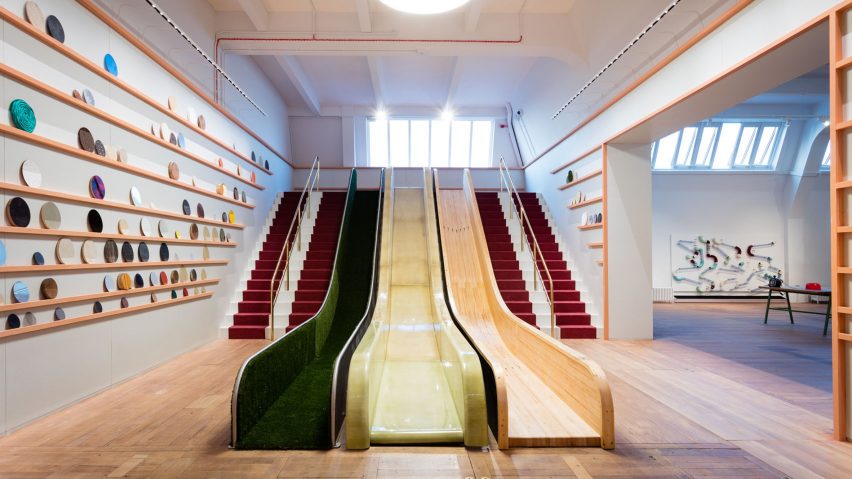
Muf creates "wonderlab" inside Science Museum gallery
Architecture studio Muf has created a new interactive gallery at London's Science Museum, featuring playground slides, a quilted theatre and a huge model of the solar system.
As the first of several new galleries set to open at the museum, the Wonderlab invites visitors to experiment with over 50 different models and objects, ranging from an oak tree studded with magnets to a functioning laboratory.

The Muf team – best known for curating the British Pavilion at the Venice Biennale 2010 – treated the architectural design as an extension of the exhibition, aiming to create an immersive, playground-like experience.
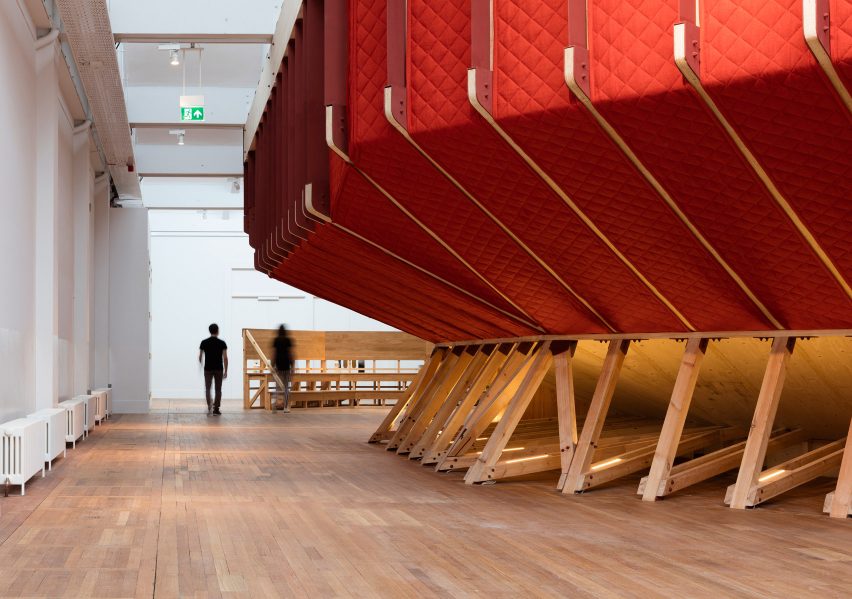
They stripped back all the suspended ceilings and partitions within the third-floor Statoil Gallery, creating a more open-plan 2,300-square-metre space.
This space is divided up into different zones, with visitors free to wander to and fro, encountering a variety of objects on the way.
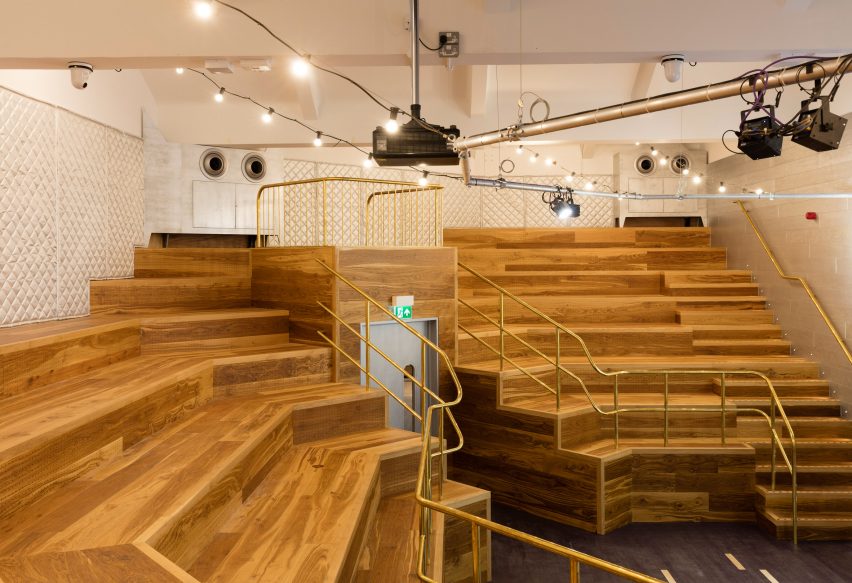
The team – led by directors Katherine Clarke and Liza Fior – describe the result as "a rich landscape" that encourages visitors "to roam guided by what catches their eye, rather than a pre-determined route and narrative".
"Long vistas and a lack of rigid demarcation in the space encourage visitors to make connections between the different scientific phenomena and to move freely through the gallery," they said.
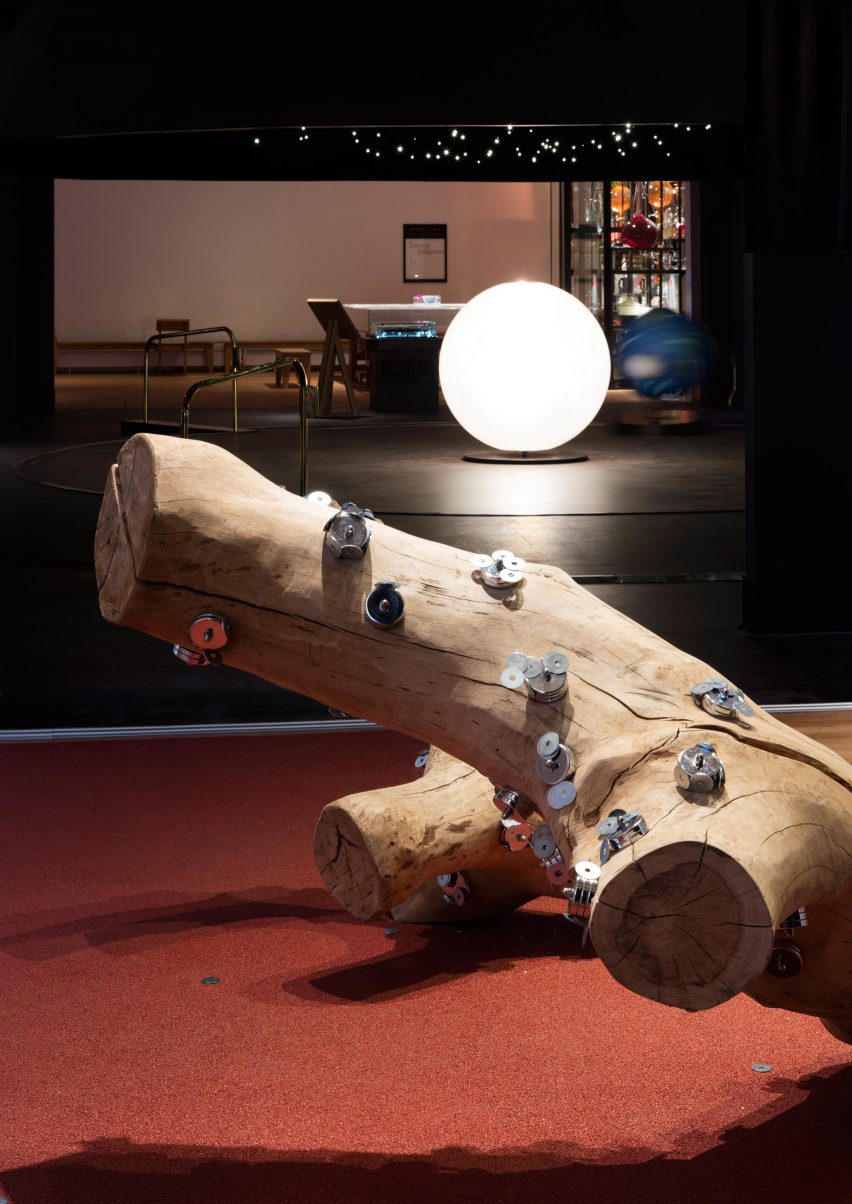
The largest architectural intervention is the new wood-framed theatre, featuring a silver interior and a quilted red exterior. As well as the 120 seats inside, it features extra space underneath where classes of schoolchildren can gather.
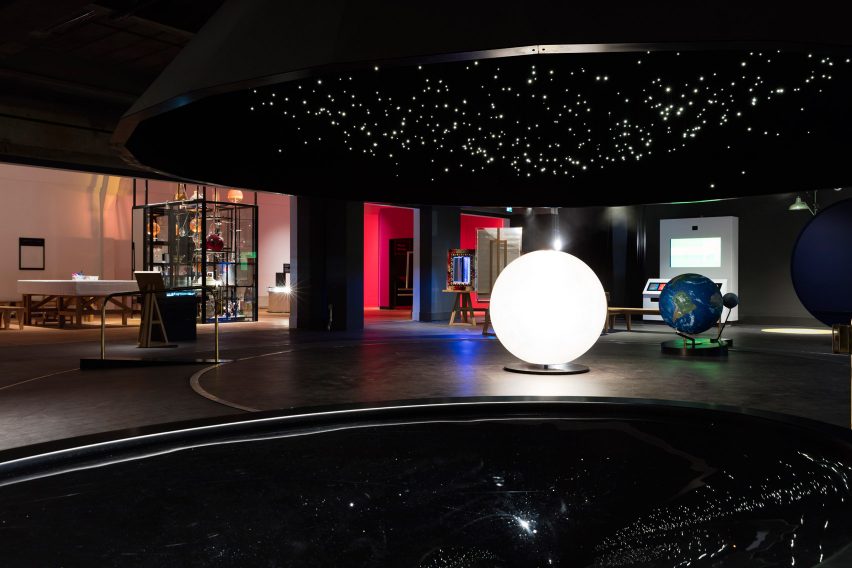
The three slides form part of the Materials zone, so each one is made from something different. One is wood, while another is lined with artificial grass – demonstrating different properties of friction.
Beside them, the wall is covered in over 400 disc-shaped material samples.
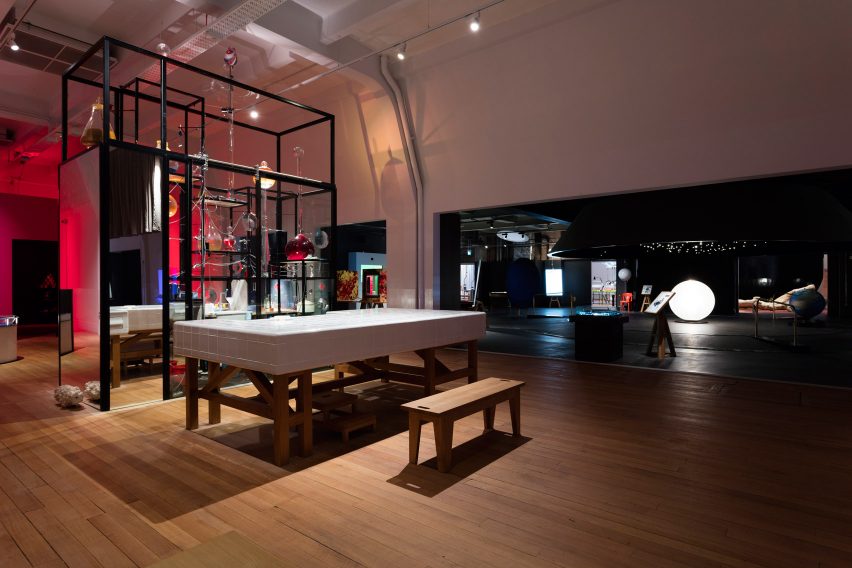
Other zones include Light, Sound, Forces, Maths, Electricity and Magnetism. Each one is marked by an appropriate hanging object – so Sound features a brass instrument, and Materials is marked by a blown-glass orb.
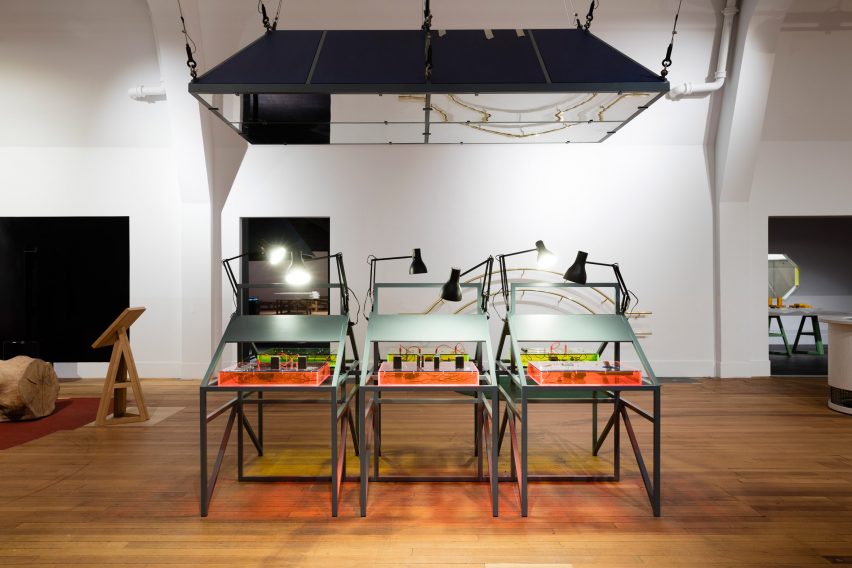
Muf commissioned British artist Siobhan Liddell to produce the 13 composite prints that feature in the Mathematics section, and teamed up with Swedish studio Front on the eight-metre-high solar system model.
Other creative partners include British designer Felix de Pass, former Droog designer Arnout Visser and stone carving students from the Building Crafts College in London's Bow.
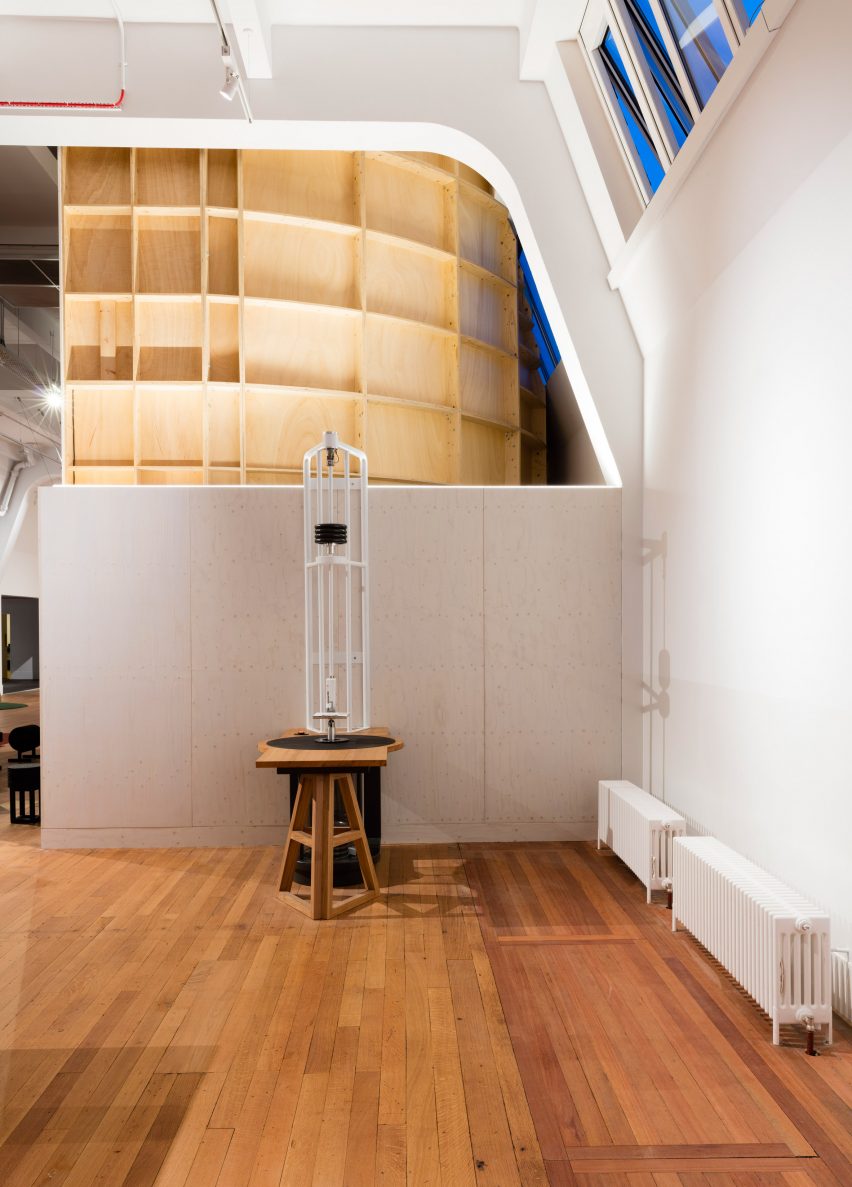
Set to open to the public this week, the Wonderlab is part of a series of revamped galleries opening at the Science Museum, with spaces by Zaha Hadid Architects and Wilkinson Eyre set to follow.
The museum also recently reopened its research centre, with a new design by London firm Coffey Architects.
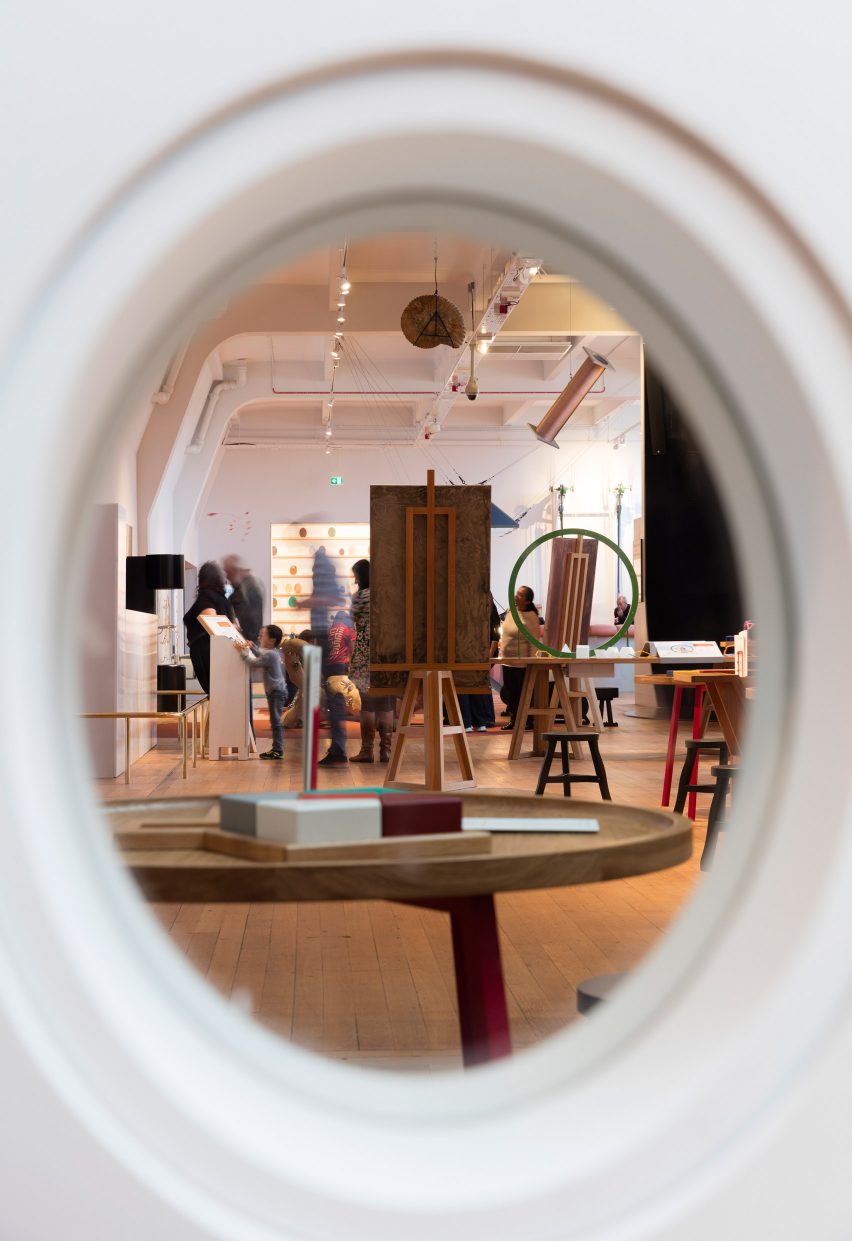
Muf describes the Wonderlab as a set of "robust, hardworking spaces which also deliver a sense of grandeur and delight".
"These details are a conscious reaction against the generic bright, wipe clean, panelled architecture of many schools and public spaces," they said.
Photography is by Plastiques.